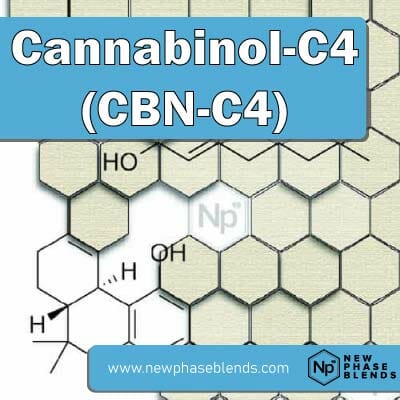Delta-9-cis-tetrahydrocannabinol (cis–THC) is a synthetic cannabinoid. These compounds don’t occur naturally in the cannabis plant.
Synthetic compounds are often products of certain chemical functions or reactions between two cannabinoids and their environment.
The degradation of cannabinol (CBN) leads to the formation of other compounds, through conversion from their precursors. During the process of isolating a certain compound, other compounds may be derived.
Related: What is Delta 9 THC?
Cannabinol was discovered in 1940 by British scientist Robert Cahn. In 1986, a group of scientists under R.K. Razdan analyzed the structural-activity relationship (SAR) of cannabinoids. We don’t know who discovered the cis-THC compound, although the earliest mention of the compound was in 2017.
The formation of cis-THC is purely synthetic and doesn’t occur naturally in the cannabis plant. Although in name, cis-THC sounds similar to the THC compound derived from the CBN and cannabigerivarin (CGBV) mother compounds, they are not be mistaken for each other.
The compound cis-THC is said to have no similarity to the THC family hence its non-categorization and its miscellaneous compound tag. Rather, its structure similarity is with compounds like cannabrichromene, synhexyl, dibenzo(b,d)pyran-6-methanol, and some others.
In its chemical structure, cis-THC has an HBD count of 1, HBA of 2, and RB count of 4. With a topological surface area of 29.5A2, a heavy atom count of 23, its property complexity value is 439.
Owing to its small quantity and pervasive nature, cis-THC is one of the unique compounds of the marijuana plant. Without research and clinical trials, there is no knowing what this compound can do.
Related: How Long Does Delta 8 THC Stay In Your System?
The future of the compound is very much tied to the legal status of cannabis in the world. With the US leading the way in legalization, we are hoping that other countries will follow its lead by allowing the use of the compound and plant in the world of medicine.
HOW DOES CIS-THC WORK?
Cannabinoids are known to bond with the human endocannabinoid receptors found throughout in the body.
Related: What is CBN?
These receptors are encoded with a protein like constituent and found to be tied to the body’s immune system and central nervous system. Cannabidiols combine with these receptors to perform their functions.
Cis-THC hasn’t gone through clinical trials and tests for us to know how it functions at these receptor points. To know more about how the compound works, we will have to wait until these trials, research, and experiments.
POSSIBLE THERAPEUTIC BENEFITS
Cannabidiols are a promising category of compounds with many theorized therapeutic uses. We have observed some of these compounds to be psychoactive, while some that act as nerve blockers. Their practical uses are extensive, even helping things like diarrhea, insomnia, etc.
Related: CBD vs CBN
The cis-THC compound will doubtlessly have its own features and benefits for treating ailments and diseases; we just need the research and trials to begin in earnest.
INTERESTING FACTS
- It has a molar mass of 314.5 g/mol.
- Its chemical formula is C21H30O2.
- Its IUPAC name is (6aS,10aR)-6,6,9-trimethyl-3-pentyl-6a,7,8,10a-tetrahydrobenzo[c]chromen-1-ol.

References
National Center for Biotechnology Information. PubChem Compound Summary for CID 12831993, delta-9-cis-Tetrahydrocannabinol, (-)-.
Prandi C, Blangetti M, Namdar D, Koltai H. Structure-Activity Relationship of Cannabis Derived Compounds for the Treatment of Neuronal Activity-Related Diseases. Molecules. 2018 Jun 25;23(7):1526. doi: 10.3390/molecules23071526. PMID: 29941830; PMCID: PMC6099582.
Uliss DB, Dalzell HC, Handrick GR, Howes JF, Razdan RK. Hashish. Importance of the phenolic hydroxyl group in tetrahydrocannabinols. J Med Chem. 1975 Feb;18(2):213-ss5. doi: 10.1021/jm00236a025. PMID: 1120991.











